Executive Summary
Levi’s is an American apparel company that is renowned for the manufacture of denim jeans. The company endeavors to meet customers’ needs regarding fashion. It serves customers who uphold different values, cultures, lifestyles, and personalities. This report evaluates Levi’s present marketing strategy, particularly in Australia. The report will compare Levi’s with its main competitors who are Calvin Klein and Gap Jeans.
The report will evaluate Levi’s history, target market, competitors, and the retail market. It will culminate by giving recommendations on what the company must do to improve its performance, particularly in the Australian market. A mystery shopping has been conducted to understand how Levi’s outlets and online store handle customers. The company has the potential of increasing its market share if it continues to improve its retail marketing strategy.
Introduction and Background
History of Levi’s Company
Levi’s is a renowned denim brand worldwide. Whenever an individual thinks about jeans, the first brand that comes to mind is Levi’s. According to Hackett (2014), Levi’s was the first company to capitalize on jeans. The company is renowned for the manufacture of the five-pocket blues. Levis Strauss and Jacob Davis established Levi’s in 1873. The company produced its first blue jean dubbed XX in the same year.
In 1895, the company started to diversify its product range. It manufactured its first bicycle pant. In 1902, Strauss passed away, and his nephews took control of the enterprise. In 1908, Levis registered its trademark (Two Horse) in Japan giving it an opportunity to reach the global market. Later, the company opened branches in South Africa and Australia. The decision to target the global market led to Levi’s becoming an iconic jeans brand it is today.
In 1909, Levi’s introduced a new product category comprising coats and khaki pants. The products were manufactured under the Levi’s Strauss and Co. (LS&Co.) clothing line. Three years later, the company produced Koveralls for children. Hackett (2014) holds that Cowboys contributed to the “transitioning of jeans from work-wear to fashion statement” (p. 184). Levi’s jeans were popular amid the Cowboys. Hackett (2014) alleges that the Cowboys facilitated the elevation of the status of Levi’s jeans. People began to associate the jeans with a life of liberty and autonomy.
In 1934, Levi’s manufactured the first lady’s jeans dubbed Lady Levi’s. Hackett (2014) avers that Lady Levi’s shared a lot of features with the men’s 501 jeans. Nevertheless, it had a stylishly high nipped waist that led to its feminine allure. In 1936, “Levi’s introduced a Red Tab to differentiate its jeans from competitors” (Hackett, 2014, p. 184). The Red Tab bore the company’s name (LEVI’S®) and was attached to the right back pocket. Since then, the company has evolved tremendously. It has invested in numerous brands. Today, Levi’s is one of the leading denim brands in the world.
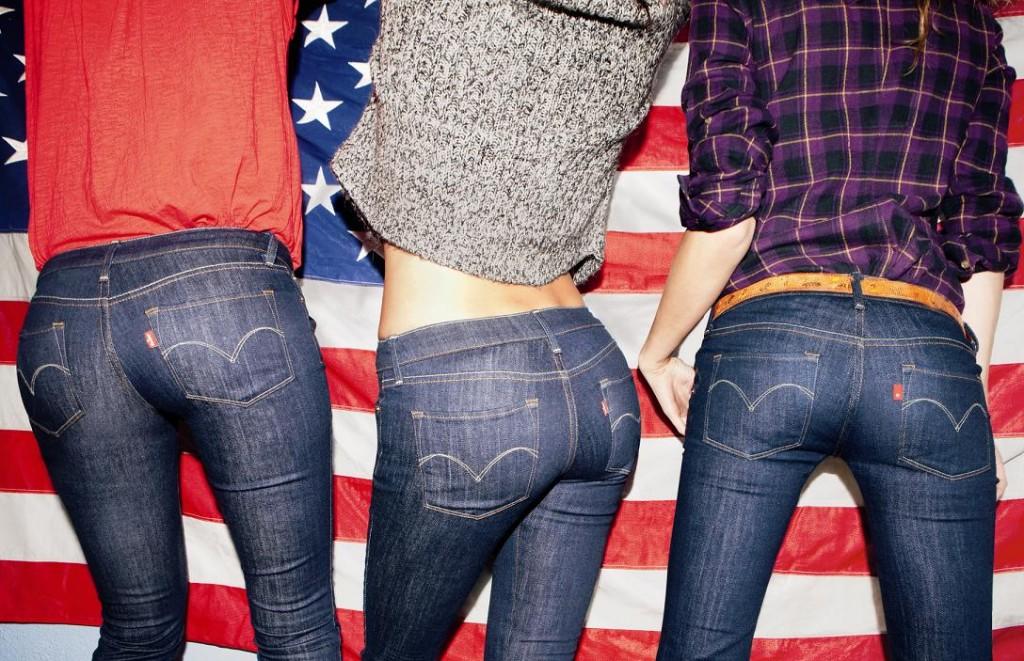
Mission Statement
The mission statement of Levi’s Company is “to sustain responsible commercial success as a global marketing company of branded apparel” (Hackett, 2014, p. 185). The company endeavors to strike a balance between profit, leading market position, return on investment, and quality. Hackett (2014) maintains that Levi’s Company understands that it has an obligation to provide quality products and services to customers. Consequently, the company makes sure that it abides by the established business ethics and takes responsibility for its activities.
Target Market and Positioning
Demographics
According to McGowan (2002), Levi segments its target market according to gender, income, age, occupation, and social class among others. Levi’s manufactures apparel products for both sexes. The company produces shorts and jeans for both men and women. Besides, it creates shirts and T-shirts for both genders. According to McGowan (2002), women have a wide variety of products that they can purchase in Levi’s.
The company continues to come up with innovative brands of women jeans. Recently, the company manufactured Levi’s Curve ID for females. The Curve ID constitutes three distinct fits for ladies. They are the bold curve, demi curve, and a slight curve. It implies that the company can serve all women regardless of their body figures. McGowan (2002) alleges that Levi’s divides its market segment based on occupation.
McGowan (2002) insists that Levi’s Company mainly targets high-income earners. The company’s brands are expensive. Hence, most middle and low-income earners cannot afford them. Despite focusing primarily on the high-income earners, the company does not neglect the middle-income population. Levi’s markets its products at different prices to cater for the middle-income earners. The company’s brands go for between AUD30 to AUD 600.
McGowan (2002) holds that Levi’s divides its market segment according to age. Today, the company targets infants, teenagers, and adults. The success of Levi’s lies in its ability to target a broad market segment. The company can hardly lack customers. The company’s biggest share of the market comprises the youths. Tucker (2008) posits, “Many teens buy the company’s 514 slim straight jeans, 569 loose fit jeans, and 501 original jeans” (p. 18).
Psychographics
Psychographic segmentation entails splitting the target market based on personality, values, and lifestyles. Warner (2002) holds that individuals in the same demographic have various psychographic profiles. People have different values and personalities. Besides, people observe different lifestyles. Hence, it is imperative not to generalize a target market. Levi’s Company segments its market according to lifestyle.
The company endeavors to appeal to the clients’ distinct personalities. It underlines the reason why the company manufactures products that bear different styles. Currently, the company has jeans and types of denim that are suitable for casual and official wear. Besides, the company manufactures T-shirts and children’s apparel suitable for sports.
Market Positioning
According to Anderson-Connell, Ulrich, and Brannon (2004), market positioning is critical to the success of any business. Market positioning leads to customers developing a particular perception about a company or product. Anderson-Connell et al. (2004) argue that market positioning determines if customers accept or reject a brand. Previously, Levi’s positioned itself as a symbol for independent life. The company associated mainly with cowboys who were known for leading a free life.
Besides, the company positioned its products as appropriate for casual wear. Later, in the epoch of the Baby Boomers, the company positioned its apparels as “cool”. According to Anderson-Connell et al. (2004), a majority of the movie actors wore Levi’s products. Celebrity endorsement helped Levi’s to position its apparels as “cool”. With time, the company shifted from positioning its products as cool to a symbol of teenage and revolution.
In the late 1990s, most schools used jeans as a uniform. Anderson-Connell et al. (2004) claim that today, Levi’s positions itself based on the target market and geographical location. In the United States market, the company positions its products as inexpensive and suitable for casual wear. On the other hand, Levi’s position its apparels as appropriate for prestige in the Russian and Spanish markets.
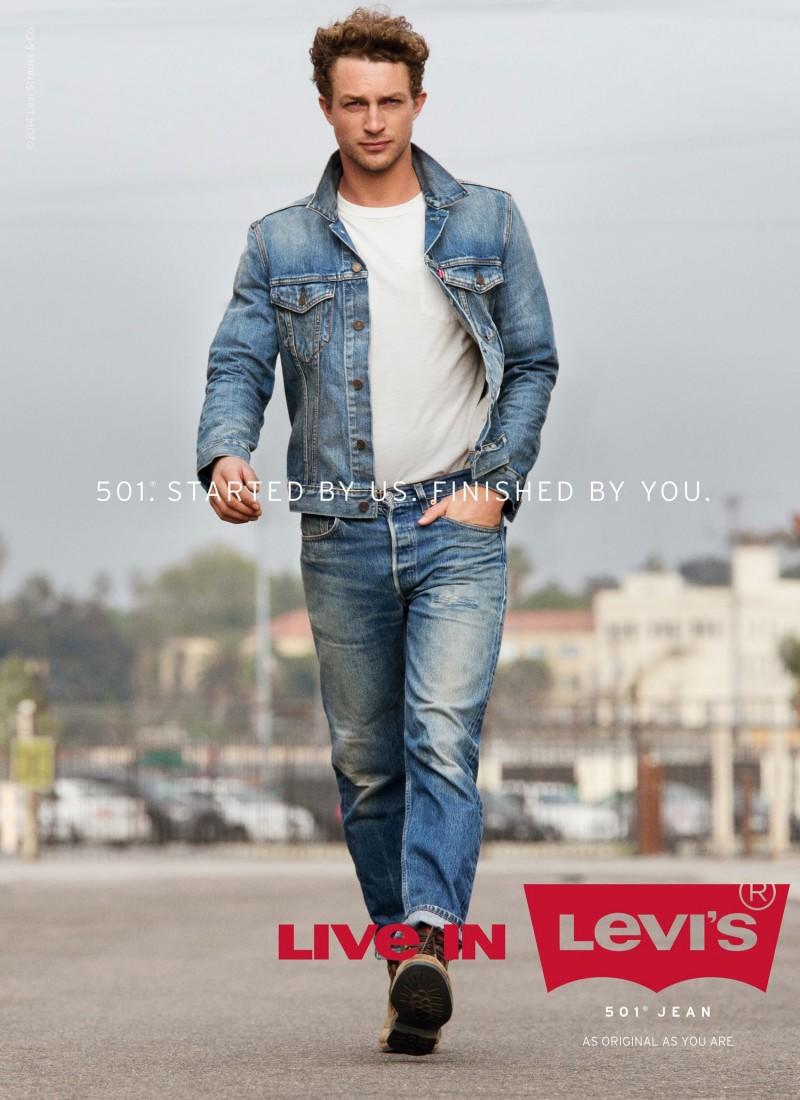
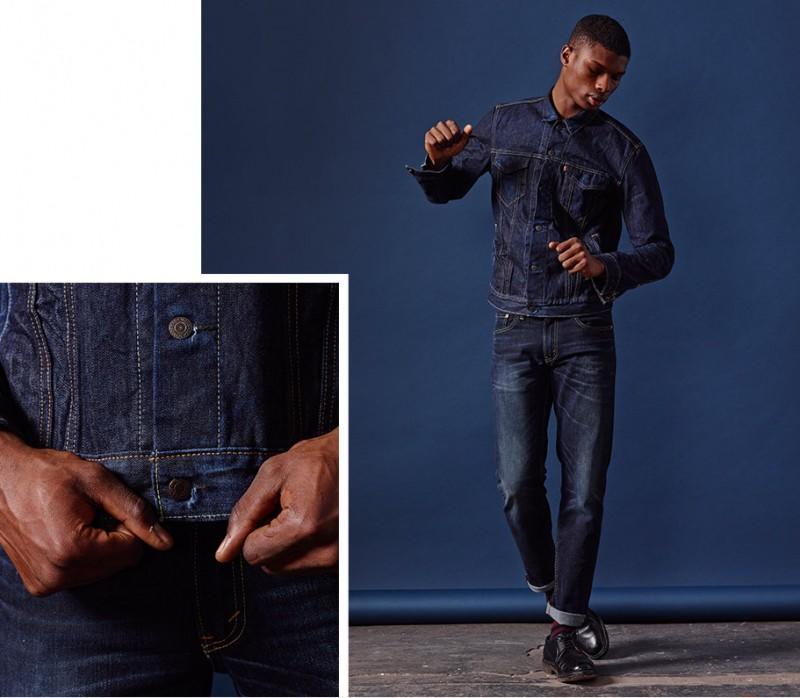
Competitors and Competitive Advantage
Levi’s Competitive Advantages
A company’s competitive advantage may derive from the activities that the management undertakes. According to Miller and Breton-Miller (2005), the survival of a business depends on its competitive advantages. One of Levi’s competitive advantages is its diverse varieties of quality apparel. Quality is a critical competitive advantage for the company. Currently, the company manufactures durable, consistent clothes, which are comfy.
Miller and Breton-Miller (2005) argue that Levi’s has a line of hand-made garments. The clothes are hand-made to guarantee quality. Furthermore, the company has a range of casual wears that are not only inexpensive but also consistent and durable. Indeed, Levi’s has a product mix that other businesses can hardly imitate. Besides quality, Levi’s has full market coverage that adds to its competitive advantages. The company targets customers across the globe. Therefore, it is guaranteed sales in times of financial crisis like inflation in one geographical zone.
Cubitt (2004) cites price differentiation as another competitive advantage that Levi’s enjoys. The company charges a premium price for its products. The pricing strategy that the firm utilizes contributes to customers having a positive outlook on Levi’s. The premium price covers the extra production costs that the company incurs. The application of price differentiation helps the company to circumvent price-based rivalry.
Today, customers are accustomed to the company’s prices that commensurate the value of the apparel. According to Cubitt (2004), Levi’s has invested in technology, which helps it to lower its production and distribution costs. Investment in modern computer and communication technologies enables Levi’s to manufacture products in bulk. As a result, the company benefits from economies of scale. The company can quickly locate a niche market and satisfy it through the production of customized apparel. Initially, the production of customized products was untenable due to cost. Nevertheless, the rise of technology has helped Levi’s to address clients’ needs for flexibility. Technology has not only boosted mass production at Levi’s but also enhanced service delivery.
Competitors and their Strengths
Levi’s encounters stiff competition from rival apparel companies. The company’s main competitors include Gap Jeans, Calvin Klein, Tommy Hilfiger, and VF Corp. The entrants of competitors led to the end of an era of monopoly for Levi’s. The rival companies came up with competitive prices that led to Levi’s losing clients. Besides, competition lowered Levi’s profit margin. Companies like Calvin Klein and Gap Jeans wage stiff competition against Levi’s (Miller & Breton-Miller, 2005).
The primary competitive advantage of Calvin Klein is its capacity to manufacture products that attract high-end consumers. Indeed, Calvin Klein has stolen a significant share of Levi’s high-end customers. On the other hand, Gap Jeans is renowned for the production of apparel that targets low-end clients. Levi’s focuses mainly on middle- and high-income earners (Miller & Breton-Miller, 2005). As a result, it has lost the low-end jeans market to Gap Jeans.
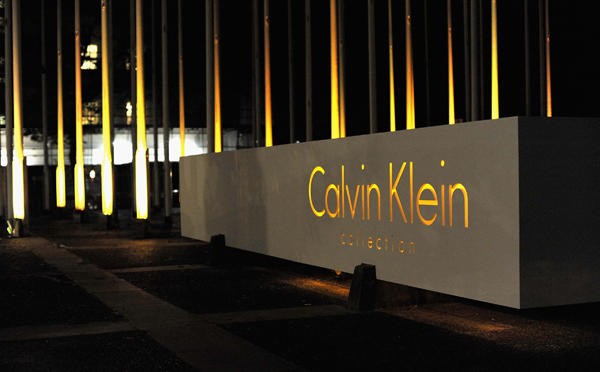
Retail Sector and Environmental Factors
The contemporary apparel retail industry is full of uncertainties. Warner (2002) claims that changes in technology and the emergence of new entrants pose a significant threat to veteran companies. Indeed, for a company to succeed in this sector, it has to ensure that it manufactures quality products at competitive prices. The contemporary clients are not only concerned with the quality of the goods but also a company’s contribution to the environment and promotion of human rights.
The problem of sweatshops has led to society being critical of apparel companies. Levi’s requires ensuring that it enhances the working environment for employees as this might affect its image. Besides, the company should endeavor to preserve the environment through energy conservation and the reduction of greenhouse gas emissions.
The Australian apparel retail sector is losing significant market share to the retailers from the northern hemisphere. Additionally, the rise of online retail poses a grave threat to the traditional brick and mortar stores. Warner (2002) insists that the state of the contemporary retail environment shows that sooner retailers will do away with intermediaries. The retail companies will soon be purchasing apparel directly from the manufacturers to maximize profit.
For clothing retailers to succeed in the future, they will have to embrace change. Innovation and technological advancement have resulted in disruptions in the retail sector. On the other hand, consumer demands continue to increase. For the retailers to prosper in the contemporary environment, they require being innovative. Innovation will enable retailers to exploit emerging opportunities and counter possible threats.
Retail Marketing Strategy
Retail Format
According to Cohen and Jones (2006), Levi’s operates on a fixed retail format. Before the introduction of this model, the company was schizophrenic. The company did not have a specific design. Instead, it came up with a new model every year. The primary objective of coming up with a fixed retail format was to “create a more emotionally resonant brand and experience” (Cohen & Jones, 2006, p. 143). The contemporary Levi’s retail stores have a warmer look than usual outlets.
The retails’ ceiling and walls are painted red. Besides, the retails have timber-slatted gates that facilitate the display of products. The timber-slated gates help the retails to stand out from competitors. The retails’ in-store graphics have also been enhanced. The stores use varnishes and tints to signify the quality of the fabric. Additionally, they have ‘broken topographies’ that bring out a ‘sticker-like, used feel’. The apparels are organized according to gender and age. Cohen and Jones (2006) allege that the retails use a poignant display to present girls’ garments and a cogent exhibit for boys.
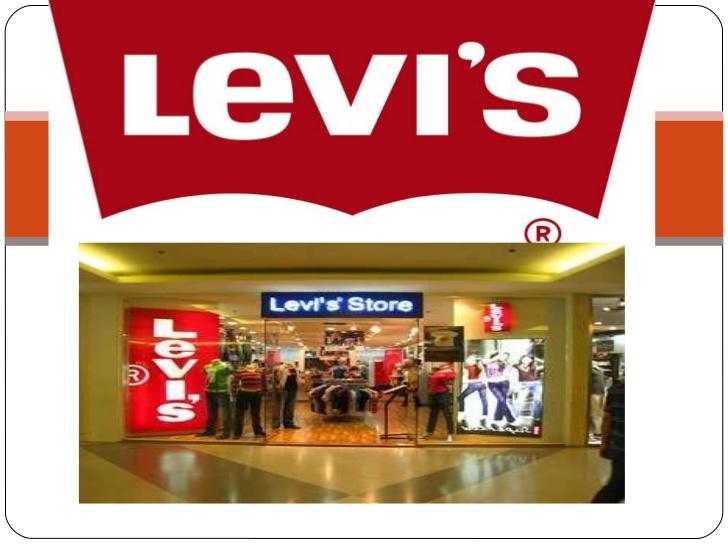
Location Strategy
The location of a retail outlet is paramount to its success. According to Cohen and Jones (2006), retail stores should be situated in areas that receive heavy traffic. Levi’s appreciates the significance of location to its performance. As a result, it locates its retail outlets along the streets with high traffic. Levi’s has opened a store at Perth. The store is located at Wellington St, Harbor Town. The store stocks popular denim merchandises for both males and females.
The shop targets mainly the youths. The outlet is strategically located on the ground floor to ensure that people can easily spot it. The location of the store in the city implies that it can target a huge population that frequents the town. Besides, many tourists visit Perth City. Hence, retail has an opportunity to target even foreigners.
Retail Mix
Levi’s stocks a wide range of merchandise ranging from denim jeans, shirts, T-shirts to shoes. The availability of different products contributes to the competitive advantages of the company. Besides offering a wide variety of products, the company also sells merchandise that suits distinct personalities, values, and lifestyles (Cohen & Jones, 2006). Currently, the company offers a Curve ID brand that suits all women regardless of their body size.
Therefore, it is hard for one to visit Levi’s outlet and leave without finding an attractive product. As aforementioned, Levi’s stocks products for all genders, ages, professions, and social statuses. Apart from clothes, the company sells shoes. Cubitt (2004) maintains that Levi’s outlet also sells different accessories that compliment the clothes. Women have an opportunity to purchase bracelets, purse, and even jewels that match their clothes.
In spite of Levi’s selling its products at high prices, many customers like them due to quality. The company sells hand-made apparel that is difficult for other companies to copy. The company continues to develop modern products that are in line with changes in lifestyle and fashion. Levi’s capitalizes on its merchandise only. The company does not mix its products with other brands. It helps to ensure that competing brands do not outdo their products in the outlets. Additionally, the stocking of a single brand leads to Levi’s stores looking genuine.
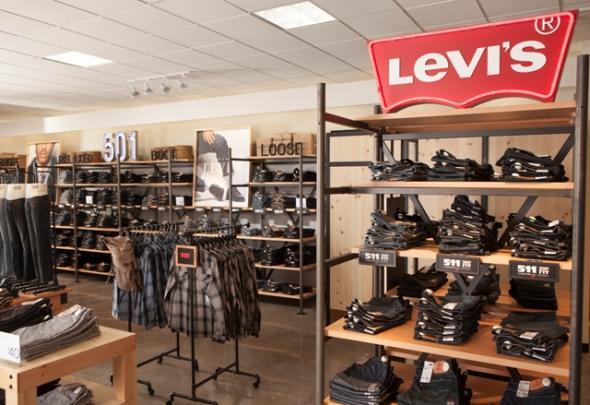
Pricing Strategy
The pricing strategy that a company utilizes determines the attitude that the customers develop towards its products. Most clients tend to associate the cost of a product with its quality. Therefore, expensive products are related to superior quality. Levi’s targets mainly high-end consumers. The company does not set the prices of its products based on the level of competition. Therefore, the prices of Levi’s products remain unchanged regardless of the increase in competition.
Thomas (2010) claims that Levi’s sells its products at fixed prices. The company sets prices based on demand, the level of income of the target market, distinctiveness and inventive characteristics of the product, and the production cost. The company does not offer discounts on its products. Levi’s pricing strategy is useful as it leads to customers developing a positive attitude towards its products. The confidence that the company exudes in setting fixed prices for the products makes customers believe in their quality. Thus, many customers purchase Levi’s products without asking for discounts.
CRM or Customer Loyalty Program
Customer loyalty program
Levi’s has a customer loyalty program dubbed Levi’s® Loop. Levi’s® Loop is an online program that seeks to encourage customers to relate to Levi’s brands (Thomas, 2010). Individuals who join the program benefit in different ways. The members get updates on new products. Besides, they earn points for purchasing Levi’s merchandise. They can later cash in the points for products.
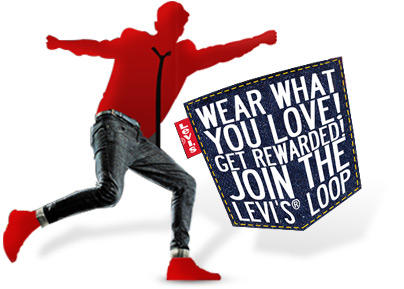
Client Perspective: Advantages and Disadvantages
Advantages
- The customer gets updates regarding new products.
- Customers earn points that are redeemable.
- Customers enjoy the privilege of attending fashion-oriented events.
Disadvantages
- Opportunities are only open to members.
- Customer’s data is prone to cyberattack as Levi’s® Loop is an online program.
Levi’s Perspective: Advantages and Disadvantages
Advantages
- The company enhances customer loyalty.
- The program helps to gather vital customer feedback.
- Helps the company to understand its customers and provide personalized services.
Disadvantages
- The program is costly to the company.
- Company does not offer consistent services to all members.
Communication MIX
Communication mix refers to a collection of the strategies that a company uses to popularize its products and policies. It comprises advertising, sales promotion, direct marketing, and personal selling among others. Levi’s targets customers with diverse cultures and values. Additionally, it targets clients who lead different lifestyles. Consequently, the company requires using a communication mix that suits different clients. Levi’s has a multichannel promotion strategy that enables it to reach different customers.
Marketplace
Thomas (2010) alleges that Levi’s products are easy to notice worldwide. Besides, the company’s Australian store is easy to identify because of its paintings and trademark. The shop uses a consistent retail format that customers can easily recognize. The timber-slated gates make outlet to stand out from rivals. The store is spaciously facilitating the easy display of merchandise. The shop does not display wares outside the store.
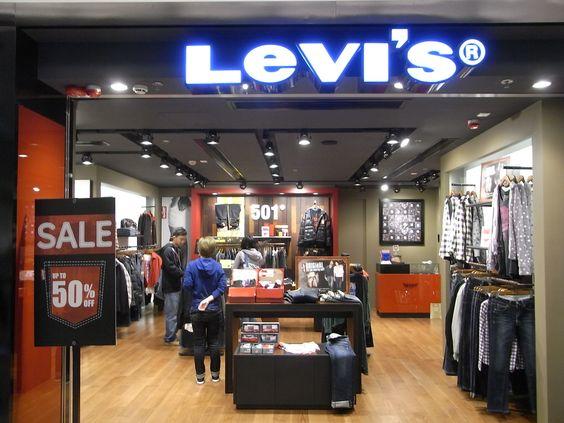
Marketspace
Marketspace refers to the platform that an organization uses to market its products and services. Levi’s uses both the sales stores and an online platform to sell its products. The company has a website that facilitates product promotion in Australia. Additionally, the website helps in the collection of customer feedback. The company has an appealing website that is easy to use. The site bears the company’s trademark as well as the red colors. Besides the sales store and website, Levi’s uses social media platforms to reach target customers. One can contact the company through its Facebook, YouTube, Instagram, and Tweeter accounts. The different platforms market similar products.
Advertising
Levi’s uses various channels to advertise its products. The company uses fashion magazines, television, banners, the Internet, and billboards to promote its merchandise. The company runs innovative and captivating advertisements that draw the attention of customers. Fashion magazines prefer Levi’s because of its high brand equity. Warner (2002) maintains that the company’s website furnishes clients with information about its products.
Direct marketing and sales promotion
In Australia, Levi’s promotes its products through the creation of public relations. The company’s sales promotion focuses on the end customers. It aims to convince potential customers to purchase Levi’s products. The company uses mass selling and personal selling to promote its products.
Public relations and personal selling
Levi holds numerous events aimed at strengthening its relations with customers. Personal selling entails Levi’s employees meeting the last customers where they get a chance to interact with them and learn about their tastes and preferences. The sales store organizes fashion-oriented events to boost customer loyalty. However, the events are meant only for Levi’s® Loop members.
Mystery Shopper’s Report
Physical ‘Brick and Mortar’ Store
Quality/Level of Customer Service
Levi’s has a single store in Western Australia. Consequently, the company requires offering quality services to build its image and acquire market share. I did not take long at the warehouse. However, the short period, which I took in the store, was adequate to know that the company is determined to offer quality services. When I got into the store, a staff member welcomed me. The staff members seemed eager to assist clients in the warehouse. They made customers feel valued. The current level of customer services will help the store to increase its market share.
The ambiance and Stock/Service Availability
Levi’s targets mainly the youths. As such, its retail outlets endeavor to look appealing to young people. The store is well lit and merchandises properly arranged. As a result, it is easy for one to locate the preferred apparel. The only challenge with the store is that it sells the products at higher prices compared to other stores. The store stocks Levi’s brands only. It offers all varieties of branded clothes. Besides, the store sells apparel for both genders.
Store Layout, Design and Visual Merchandising
Levi’s store is located on the ground floor. The store is spacious and organized. Hence, it is easy for customers to walk around and identify the products they want. The merchandise is displayed in an appealing way. Indeed, customers are tempted to visit the store even when they do not intend to purchase anything. One can hardly resist entering the store to see the products. The front of the store is fitted with huge glass panes that facilitate the display of merchandise.
Additionally, the lighting in the warehouse makes it easy for customers to see merchandise from a distance. The red ceiling and walls make the store stand out from competitors. The girl’s and boys’ clothes are displayed in extraordinary ways.
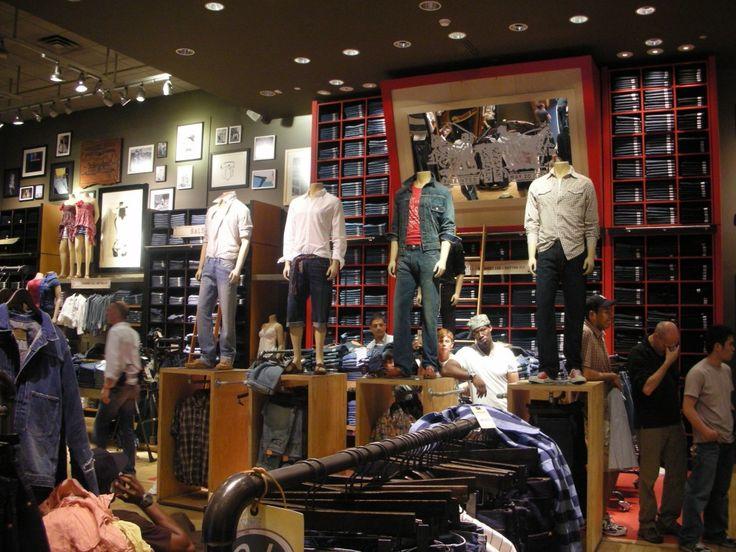
Website
Quality/Level of Customer Service
The objective of a website is to market the brand of an enterprise. Upon entering Levi’s Australia’s website, the first thing that you come across is the “find a store” link that assists the customers on how to locate Levi’s outlet. Besides, the website has several links that outline the men and women merchandise available. The “new arrivals” link enlightens potential customers on the latest merchandise in the market. In other words, the website helps the customers to not only locate Levi’s store but also understand the available products before they take the initiative to visit the outlet or purchase products online. The website offers an excellent degree of customer service.
Website Layout, Design and Visual Merchandising
The site uses colors akin to those of the stores. Information within the site is spread well, thus making it easy for customers to find their way around the website. At the top are the categories of both men and women apparel that the company offers. The groups are organized properly to enable customers to choose according to their preferences. Besides, the website has a “Fit Guides” link that assists customers to select products that suit their body size.
On the top right corner is the “My Bag” link that prompts customers to purchase products online. In the middle, the website has a link that enlightens customers about current promotions. The website targets clients who do not have adequate time to visit the store.
Benchmark against the Two Main Competitors’ Websites
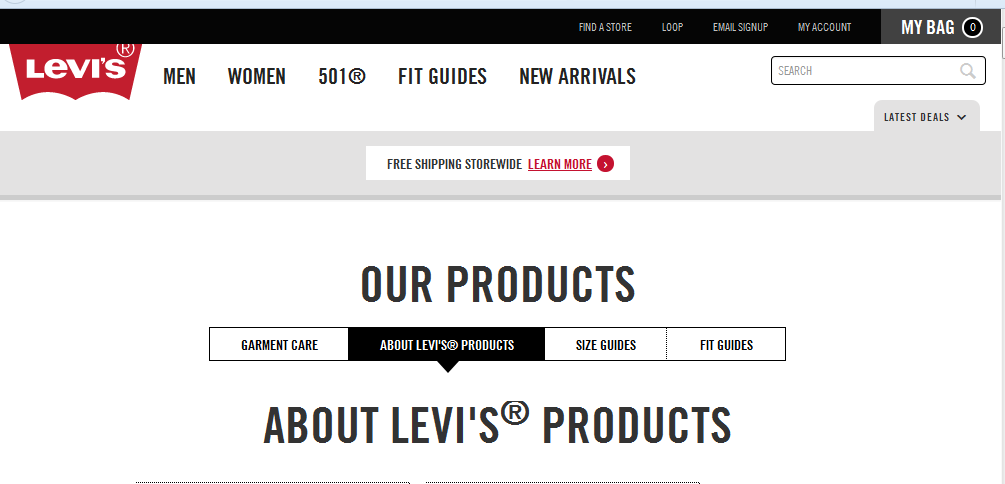

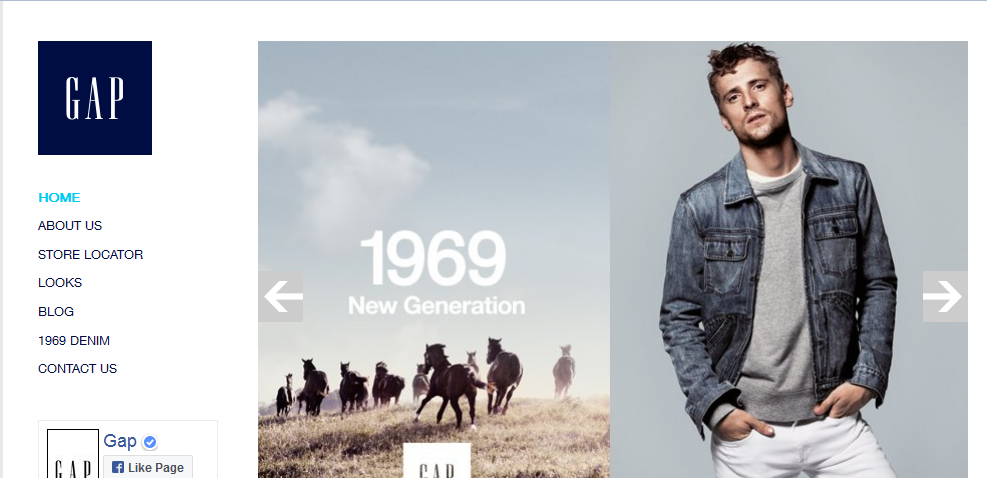
Website and Layout Design
Gap Jeans and Calvin Klein are the two primary competitors for Levi’s in Australia. The design of Calvin Klein’s website is somehow similar to that of Levi’s. At the top, the website lists the categories of the products that Calvin Klein markets. However, Gap Jean’s website is different from that of Levi’s. The website does not have links to the products that it offers. Instead, it has a marquee that lists the products.
Visual Merchandising and Online Store
Levi’s website is different from the websites of the rival companies concerning visual merchandising. Levi’s website lists the merchandise. On the other hand, Calvin Klein and Gap Jeans’ websites have pictures of models wearing the merchandise. For Levi’s, when one clicks on the preferred merchandise, a photo of an individual wearing the garment pops up. For Calvin Klein and Gap Jeans, pictures of celebrities are used to advertise the clothes. The three companies have online stores where customers can purchase merchandise.
Quality/Level of Customer Service
Calvin Klein and Levi’s target international market. Hence, the two companies have an advanced degree of customer service. Their websites comprise information regarding shipping policies to enable international customers to purchase merchandise. On the other hand, Gap Jeans does not deal with international shipping. Hence, its level of customer service is a bit small.

Mobile
The three companies do not have mobile platforms. Currently, many people own smartphones. Besides, a majority of citizens are connected to the internet. Hence, it is possible for companies to reach customers through smartphones. Levi requires investing in the mobile platform to help it to increase the market share.
Recommendations
Future Retail Marketing Strategy
The future growth of Levi’s company depends on its capacity to come up with retail marketing strategies that do not discriminate against some customers. The company requires modifying the customer loyalty program and investing in the mobile platform.
Customer Loyalty Program
Presently, the customer loyalty program benefits a few clients. The company should establish a program that covers all the customers. It will enable the business to understand customers’ needs and monitor their buying behaviors. The company should issue a universal loyalty card that clients can use at any of Levi’s stores worldwide.
Mobile Application
Most customers do not have an idea about the presence of Levi’s store in Perth. Thus, the company should invest in the mobile platform to popularize itself. Additionally, it should ensure that it has mobile applications that can allow customers to purchase merchandise online.
Conclusion
In spite of stiff competition, Levi’s remains the most renowned denim jeans across the globe. The brand continues to do well in the United States and across the world. Currently, Levi’s is in the process of establishing its business in Australia. The company ensures that all stores operate under a fixed retail format to maintain its authenticity. The company has invested in the website to popularize its products and support online marketing. In spite of Levi’s having vast knowledge in the manufacture of jeans, it requires reinventing its brand to remain competitive. The company should also invest in a mobile platform to increase its market coverage.
References
Anderson-Connell, L., Ulrich, P., & Brannon, E. (2004). A consumer-driven model for mass customization in the apparel market. Journal of Fashion Marketing and Management: An International Journal, 6(3), 240-258. Web.
Cohen, A., & Jones, A. (2006). Brand marketing in the new retail environment. Harvard Business Review, 56(5), 141-148. Web.
Cubitt, E. (2004). Levi’s to launch girls website to boost data. Precision Marketing, 16(19), 5-12. Web.
Hackett, R. (2014). A history of the blue jeans. Fortune, 170(5), 184-185. Web.
McGowan, P. (2002). Inspiring the organization to act: A business in denial. International Journal of Market Research, 44(2), 143-163. Web.
Miller, D., & Breton-Miller, I. (2005). Managing for the long run: Lessons in competitive advantage from great family businesses. Boston: Harvard Business School Press. Web.
Thomas, J. (2010). Levi’s crafts its image. Marketing, 3(1), 14. Web.
Tucker, R. (2008). Levi’s outlook: Some upside potential despite retail turmoil. Women’s Wear daily, 198(34), 17-19. Web.
Warner, F. (2002). Levi’s fashions a new strategy. Fast Company, 19(64), pp. 48-50. Web.
Mystery Shopping Forms
Contents
- Mystery Shopping Form for Physical Store
- Answers
- Mystery Shopping Form for Website
- Answers
- Mystery Shopping Form for the 2 Competitors’ Websites (Calvin Klein and Gap Jeans)
- Answers: Calvin Klein
- Answers: Gap Jeans
Mystery Shopping Form for Physical Store
Questions
Store Appearance
- Was the store’s outside appearance captivating?
- How was the window display?
- How was the inside of the store?
- Was it easy to locate merchandise?
- The general appearance of the store?
Employees of the Store
- Were the employees welcoming?
- If the employees were not welcoming, what were they doing?
- Did you have a chance to talk to employees?
- Did the employees have adequate knowledge about the merchandise?
- Overall experience with the employees?
Merchandise
- What collection of merchandise did the store offer?
- Was merchandise displayed well?
- Was it easy to locate merchandise?
- Overall opinion of the products sold.
- Describe the overall shopping experience.
Miscellaneous
- Were the operating hours convenient?
- Did the store inform customers about its website?
- Was the store properly guarded?
- Describe the lighting system in the warehouse.
- Was it possible for clients to register for the loyalty program at the store?
Answers
Store Appearance
- The physical appearance of the store is in line with other Levi’s outlets across the globe. The store is painted red, and bears a red Levi’s logo at the entrance.
- The store has huge windows that display the merchandise. One can spot mannequins adorned in Levi’s brands. The show is captivating and helps to attract customers.
- Inside, the store is clean and spacious. Merchandises are well arranged.
- One can quickly locate the merchandise as they are labeled.
- Levi’s store stands out from the competitors. The painting and lighting make it easy for customers to spot the shop from a distance.
Employees of the Store
- The employees greeted and welcomed me into the store.
- The workers stopped everything that they were doing and attended to customers.
- I had an opportunity to talk with the employees regarding the merchandises. I wanted to know if I could get denim jean for my brother.
- The employees had vast knowledge about the merchandise. They could easily determine a trouser that could fit my brother even without taking his measurements.
- I had a good experience with the employees. They took me around the store and made me feel appreciated. They also addressed me in a polite way.
Merchandise
- The store specialized on merchandises for both genders. The merchandises were exclusively for Levi’s brand.
- The wares were displayed in an attractive manner.
- It was easy for one to locate the merchandises as they were grouped according to age and gender.
- The store offered superior commodities. It was hard for one to desist from purchasing a product. I ended up buying a trouser for myself, which was not in the budget.
- I had an excellent shopping experience. There were no many customers. Besides, the store stocked a variety of merchandises. Hence, it was easy to select the best merchandise.
Miscellaneous
- The store operated for twelve hours. Therefore, customers had adequate time to do their shopping.
- The store had brochures that carried information regarding its website.
- The store had a security guard outside.
- The store was well lit enabling customers to see all the merchandises.
- Yes. The customers could register for a loyalty program by filling a form.
Mystery Shopping Form for Website
Questions
Website Appearance
- Does the website provide an option for country/language?
- Is the website user-friendly?
- Is the website adapted to Australia?
- Was it simple to locate the “contact us” link?
- Describe the general experience of the website.
Online Store
- Does the store have an online loyalty program?
- What are the benefits of the program?
- What details does the customer require giving?
- Do they issue a loyalty card?
Merchandise
- Does the online store offer different varieties of wares?
- Does it have a “new arrivals” segment?
- How does the website depict the merchandises?
- Does the website offer product description?
- Can one get more information about merchandise by clicking it?
Miscellaneous
- Can anybody sign up for any newsletter on the website?
- Does the website have store locator?
- Describe the store’s online customer service
- Does the website provide a fit guide?
- What is the location of the company’s logo?
Answers
Website Appearance
- The company has a website for each country that it has sales stores
- The website is user-friendly and easy to navigate
- The website is not adapted to Australia. It does not bear any information about Australia.
- The “contact us” link was not easy to locate. It is placed at the bottom of the website
- The general experience of the site is excellent. The website feels like an online store. One feels as if he/she is virtually navigating around the physical store.
Online Store
- The store offers an online loyalty program dubbed Levi’s® Loop.
- Members of the program get updates about the company’s new arrivals. They also earn points, which are redeemable.
- The customer gives information about his name, address, date of birth, gender, and email address.
- The store does not issue a loyalty card.
Merchandise
- The online store offers an assortment of Levi’s branded commodities. The products are classified according to gender and age.
- The website has a “new arrivals” link that enlightens customers about the latest brands.
- The website uses individuals to depict the merchandises. However, it does not use celebrities or models.
- The website offers detailed information regarding the merchandises.
- Yes. Once a customer clicks the icon of merchandise, it displays the information relating to the commodity.
Miscellaneous
- No. there is no newsletter sign up on the website.
- Yes. The website has a “find store” link at the top that helps customers to locate the nearest store.
- The website offers exceptional customer service. It has information regarding payment, shipment, and the return of merchandises. Besides, it provides information about the contact details to facilitate communication between the customers and stores’ representatives.
- The website has a fit guide at the top.
- The company’s logo is situated at the top left corner of the website.
Mystery Shopping Form for the 2 Competitors’ Websites (Calvin Klein and Gap Jeans)
Questions
Website Appearance
- Does the website provide an option for country/language?
- Is the website user-friendly?
- Is the website akin to store appearance?
- Is it easy to locate the “contact us” link?
- Comment on the general experience of the website.
Online Store
- Do the companies ship merchandises to Australia?
- Is the checkout simple to manage and safe?
- Do the companies sell products in AUD?
- Does one require being a member to purchase online?
Customer Loyalty Program
- Do the companies offer customer loyalty programs
- What are the benefits of the program?
- What details does a customer require giving?
- Do the companies issue loyalty cards?
Merchandise
- Do the online stores provide different wares?
- Do the websites have a “new arrivals” segment?
- How are the merchandises depicted?
- Can one enlarge the selected merchandise to see it properly?
Miscellaneous
- Do the websites provide options for signing up for weekly newsletters?
- Do the websites have store locators?
- Describe the online customer service
- Does the website provide a fit guide?
Answers: Calvin Klein
Website Appearance
- Yes. The website has an option for the country. The language changes according to the selected country.
- The website is user-friendly. Information is displayed well and easy to locate. The website is easy to steer.
- The website uses colors akin to those of the physical stores.
- One cannot quickly locate the “contact us” link. It is put at the bottom of the web page.
- The website is simple and meets its primary objective of marketing the company’s products. It bears all the information that a customer requires to understand the business.
Online Store
- The company ships merchandise to many countries. Australia is one of the countries.
- Calvin Klein does not have an online store in Australia. Hence, the website does not have a checkout.
- Yes. The merchandises are in AUD.
- Yes. One requires creating an account to purchase online.
Customer Loyalty Program
- The company does not have a loyalty program for Australian customers. The program is only in the United States and Canada.
- The Canadian and American customers earn redeemable points. They also enjoy privileges like attending to fashion-oriented events.
- Customers give their names, addresses, dates of birth, genders, and email addresses.
- Calvin Klein does not issue loyalty card.
Merchandise
- Yes. The company offers a broad variety of wares, which include trousers, shirts, shoes, and underwear among others.
- The website has a “new arrivals” section. One can access it by clicking the preferred merchandise.
- The website uses celebrities and models to display the merchandise.
- Yes. One can enlarge merchandise by clicking it. It helps one to have a clear view of the merchandise.
Miscellaneous
- Yes. The website has an option for signing up for newsletters.
- Yes. The website has a store locator. It is at the bottom of the web page.
- The website has an excellent customer service. It furnishes clients with contact details to facilitate communication.
- One can access the fit guide by clicking the preferred merchandise.
Answers: Gap Jeans
Website Appearance
- The website does not have a country/language option. Gap Jeans have a website for Australia.
- The website is not user-friendly. Information is not well organized.
- The website does not use colors similar to those of the physical store.
- One can quickly locate the “contact us” link. It is placed at the middle left of the web page.
- The website is not easy to understand. Besides, it does not contain a lot of information about the company.
Online Store
- The company ships merchandise to Australia.
- Gap does not have an online store in Australia. Thus, the website does not have a checkout option.
- The merchandises do not have prices.
- The website does not have an option for buying wares online.
Customer Loyalty Program
- The company has a loyalty program dubbed Gap Credit Card.
- Customers earn points that can be redeemed. They also get updates regarding company’s new arrivals and events.
- Customers give their names, addresses, dates of birth, genders, and email addresses.
- Gap Jeans issues loyalty card.
Merchandise
- The website markets an assortment of products. They range from male apparels, female apparels to kids apparels.
- The website does not have a “new arrivals” link. Thus, it is hard for customers to know the company’s latest merchandises.
- The website uses celebrities and ordinary people to display the wares.
- Yes. One can enlarge the merchandises by clicking them. It enables a person to have a clear view of the product.
Miscellaneous
- No. The website does not have an option for signing up for newsletters.
- Yes. The website has a store locator. It is placed in the middle left of the web page.
- The website does not have an excellent customer service. Information provided on the website is not adequate.
- No. One cannot access the fit guide on the website.
